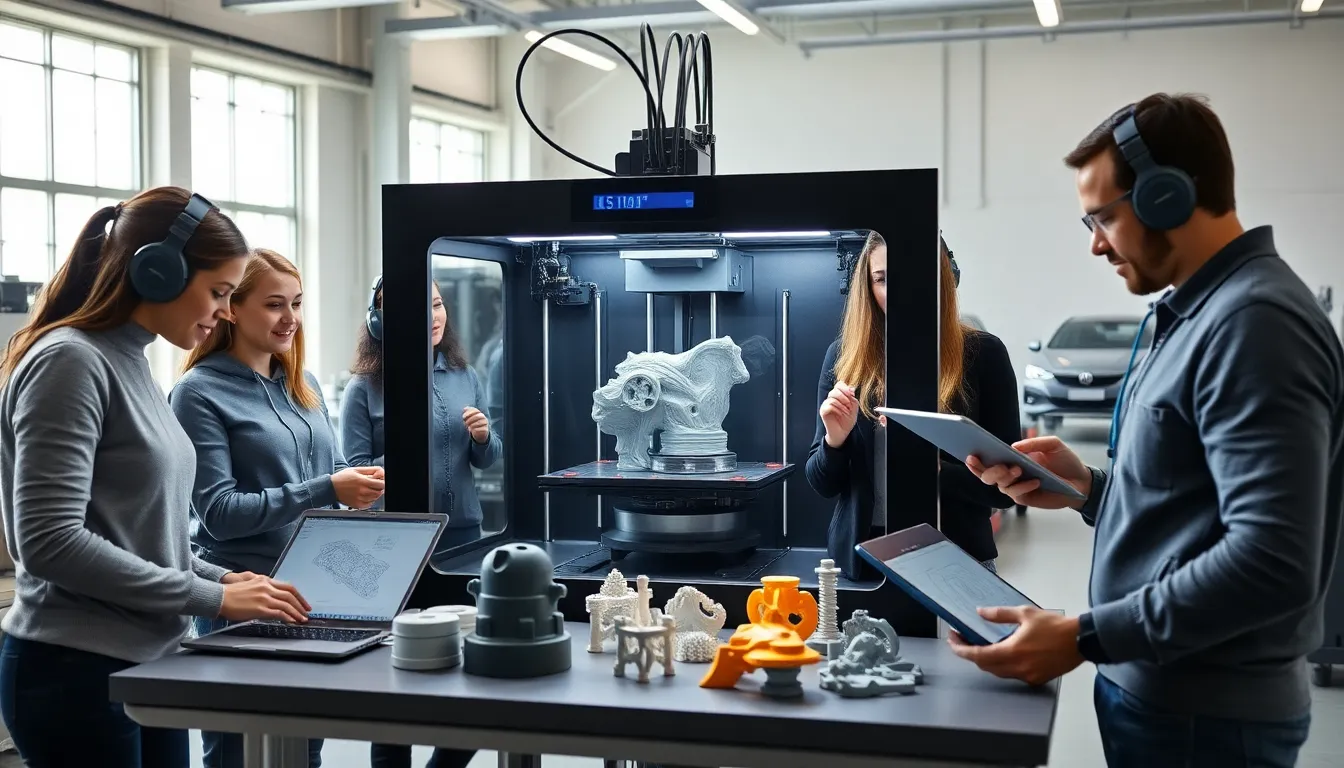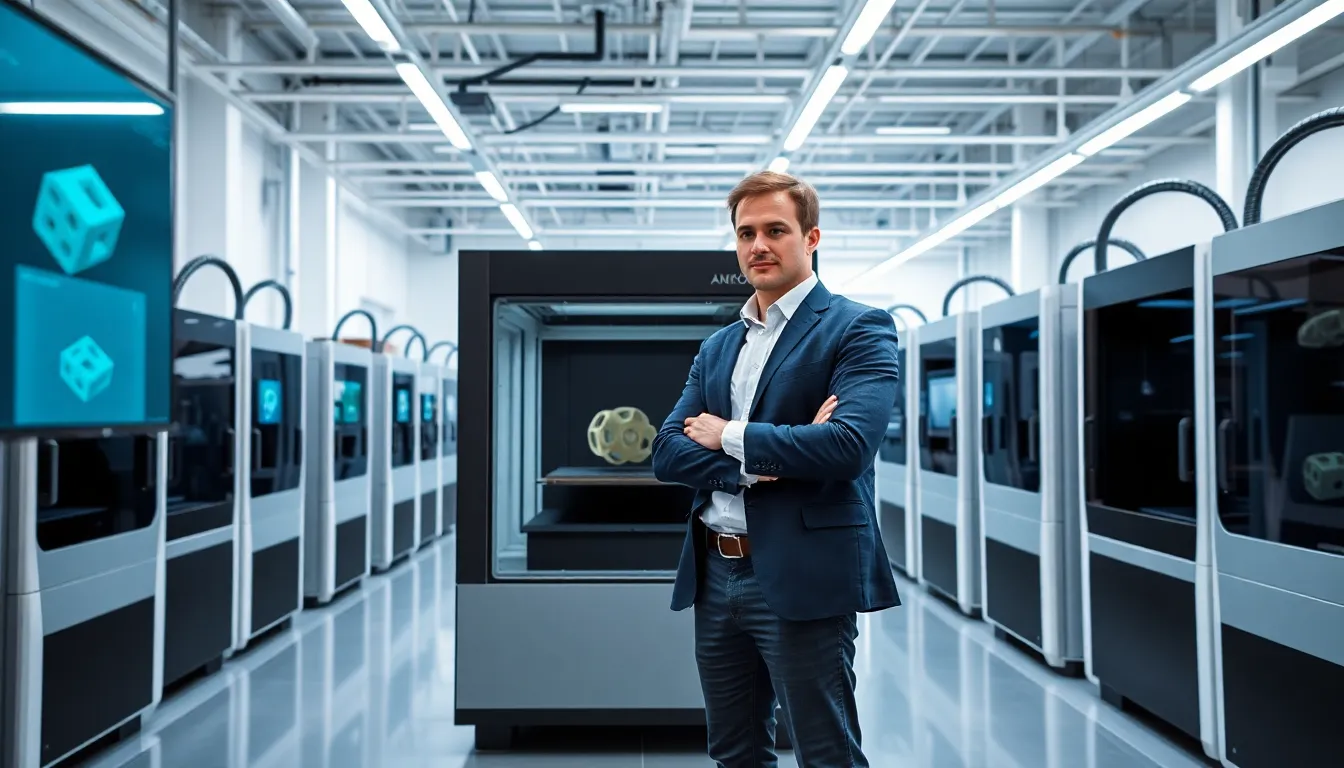Table of Contents
ToggleImagine cruising down the highway in a car that’s not only custom-built for you but also equipped with parts that were printed overnight in a factory that looks more like a sci-fi movie set than a traditional plant. Welcome to the world of 3D printing car parts, where innovation meets efficiency, and getting your dream ride has never been more attainable. Buckle up as we jump into the nuts and bolts of this exciting technology, exploring how it’s transforming the automotive industry with a perfect blend of humor and insight. Who would have thought the car of the future could be as easy as hitting “print”?
Understanding 3D Printing Technology

3D printing, at its core, is an additive manufacturing technique. Instead of carving out a shape from a solid block, it builds parts layer by layer from digital designs. This method offers incredible design possibilities that traditional manufacturing methods can’t match. But let’s break it down further.
Types of 3D Printing Processes
There are several printing processes commonly utilized in car part production:
- Fused Deposition Modeling (FDM): This is the most widespread technique. Plastic filament is heated until it melts and is extruded through a nozzle, creating layers as it cools.
- Stereolithography (SLA): This method employs a UV laser to cure liquid resin into hardened plastic. The results are highly detailed but can be limited by material choices.
- Selective Laser Sintering (SLS): SLS uses a laser to fuse powdered materials into strong parts. It’s excellent for creating complex geometries but can be costlier than FDM.
Understanding these methods can help businesses choose the right one for their needs.
Materials Used in 3D Printed Car Parts
The choice of materials for 3D printing is expanding, providing automotive manufacturers with numerous options:
- Plastics: The most common materials include acrylonitrile butadiene styrene (ABS) and polylactic acid (PLA). These are lightweight and versatile, making them ideal for prototypes and certain final products.
- Metals: Stainless steel, titanium, and aluminum can be 3D printed for high-performance applications, offering strength and durability.
- Composites: These materials combine base elements with fibers or other materials to enhance performance, often used for specialized applications in the automotive sector.
The variety of materials and processes allows for tailored solutions, making 3D printing an attractive option in the automotive industry.
Benefits of 3D Printing in the Automotive Industry
The advantages of employing 3D printing for car parts transcend mere novelty: they encompass significant benefits for manufacturers and consumers alike.
Cost Efficiency and Waste Reduction
First up is cost efficiency. 3D printing can drastically cut costs associated with traditional manufacturing techniques. This is primarily due to its ability to create complex parts without the need for expensive molds or tooling. Also, waste reduction is a significant factor: traditional methods often involve removing excess material, but 3D printing utilizes only the necessary material. This means less waste and more savings.
Customization and Design Flexibility
Customization is another game-changer in the automotive sector. With 3D printing, manufacturers can easily adapt designs to meet specific customer needs or preferences. Need a one-of-a-kind gear shift? No problem. With digital files, creating unique components takes just a few clicks. This design flexibility fosters innovation, allowing for more individualized products and defying the limitations of mass production.
Challenges and Limitations of 3D Printing Car Parts
Every silver lining has a cloud, and 3D printing is no exception. While the technology holds enormous potential, it also faces several challenges.
Material Limitations and Strength Concerns
One significant limitation is related to material properties. While 3D printing can use various materials, not all options deliver equal strength and durability. Components subjected to high-stress conditions must be carefully evaluated, as some 3D printed materials might not withstand rigorous use. Manufacturers must ensure that parts meet safety standards to avoid catastrophic failures.
Regulatory and Safety Issues
Navigating the regulatory landscape is another hurdle. The automotive industry is one of the most heavily regulated sectors, and 3D printed components must comply with rigorous safety and performance standards. New regulations are evolving, but ensuring compliance can be a challenging job for manufacturers trying to carry out this cutting-edge technology.
Future Trends in 3D Printed Car Parts
Even though challenges, the future of 3D printing in the automotive industry looks bright thanks to ongoing advancements.
Advancements in Technology and Materials
As technology evolves, new printing processes and materials are emerging regularly. Innovations such as multi-material printing are paving the way for the creation of composite parts with varying properties in a single process. This capability could revolutionize how manufacturers design and produce car components, enhancing overall performance.
Potential Impact on Automotive Manufacturing
The impact of 3D printing technology on automotive manufacturing could be profound. As companies adopt these practices, the ability to produce lighter, stronger, and more customizable parts will improve vehicle efficiency and performance. This shift could democratize car manufacturing, enabling small companies and individual entrepreneurs to enter the market and advance automotive technology.







